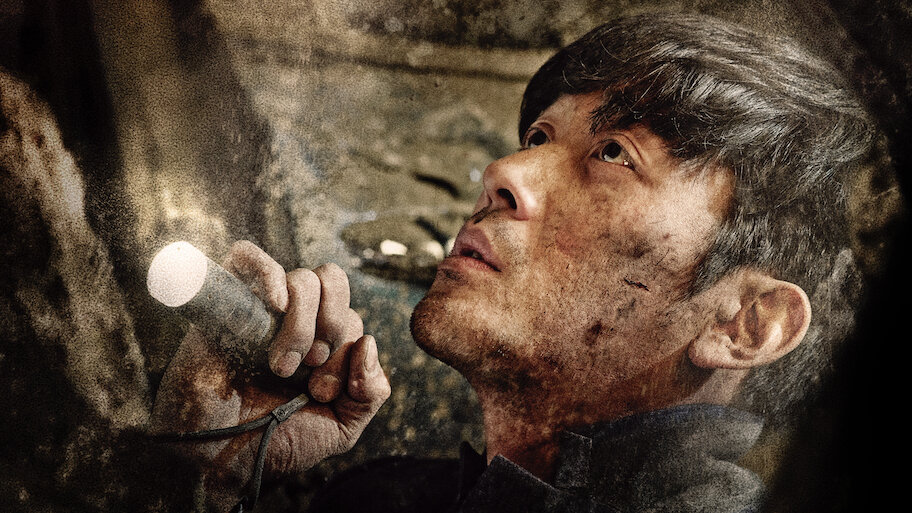"Tunnel" (2016): A Gripping Tale of Survival, Humanity, and Bureaucracy
The 2016 South Korean disaster drama Tunnel, directed by Kim Seong-hun and starring Ha Jung-woo, Bae Doona, and Oh Dal-su, is a harrowing exploration of one man's fight for survival after being trapped beneath the rubble of a collapsed tunnel. With a clever blend of suspense, social commentary, and emotional depth, Tunnel stands out as one of the most thought-provoking disaster films of recent years.
The film opens with Lee Jung-soo (played by Ha Jung-woo), an ordinary car dealer, driving through a newly constructed tunnel on his way home to his wife and daughter. Without warning, the tunnel collapses, burying him under tons of concrete and debris. With only two bottles of water, a birthday cake, and a failing cell phone, Jung-soo must struggle to survive while rescue teams on the surface launch an increasingly complex and politicized effort to save him.

What sets Tunnel apart from other survival thrillers is its grounded realism and sharp critique of bureaucracy. While Jung-soo fights for his life underground, the rescue effort becomes bogged down in red tape, media manipulation, and conflicting interests among government officials, engineers, and politicians. The film questions the efficiency of systems that are meant to serve the people but often prioritize image and protocol over human life. This commentary resonates deeply in South Korea, a country that has witnessed real-life tragedies where institutional failure cost lives, such as the Sewol ferry disaster.
Despite its intense premise, Tunnel balances tension with deeply human moments. Jung-soo’s conversations with his wife Se-hyun (Bae Doona) through a weak phone signal are particularly touching, offering glimpses of vulnerability, love, and hope. Meanwhile, Oh Dal-su delivers a strong supporting performance as the head of the rescue team, who becomes increasingly frustrated with the obstacles thrown in his path by higher authorities.

Visually, the film does an excellent job of creating a claustrophobic atmosphere. The narrow, dimly lit confines of the collapsed tunnel make the viewer feel Jung-soo’s isolation and desperation. Kim Seong-hun’s direction is tight and focused, with a pace that keeps the audience on edge without ever feeling forced or overdramatic. The cinematography emphasizes the stark contrast between the chaos underground and the often indifferent world above.
At its core, Tunnel is more than just a survival story—it is a reflection on the resilience of the human spirit in the face of overwhelming odds. It also challenges viewers to consider how society responds to crises: Do we prioritize the individual or the system? Do we act out of compassion, or do we follow protocol to protect reputations?
In conclusion, Tunnel is a powerful and emotionally resonant film that transcends the disaster genre. With strong performances, sharp direction, and an unflinching look at modern society, it offers both an engaging narrative and a deeper message. It reminds us that even in the darkest of places, hope can survive—and that sometimes, the real danger isn’t the collapse of concrete, but the collapse of empathy.
-1751689771-q80.webp)
